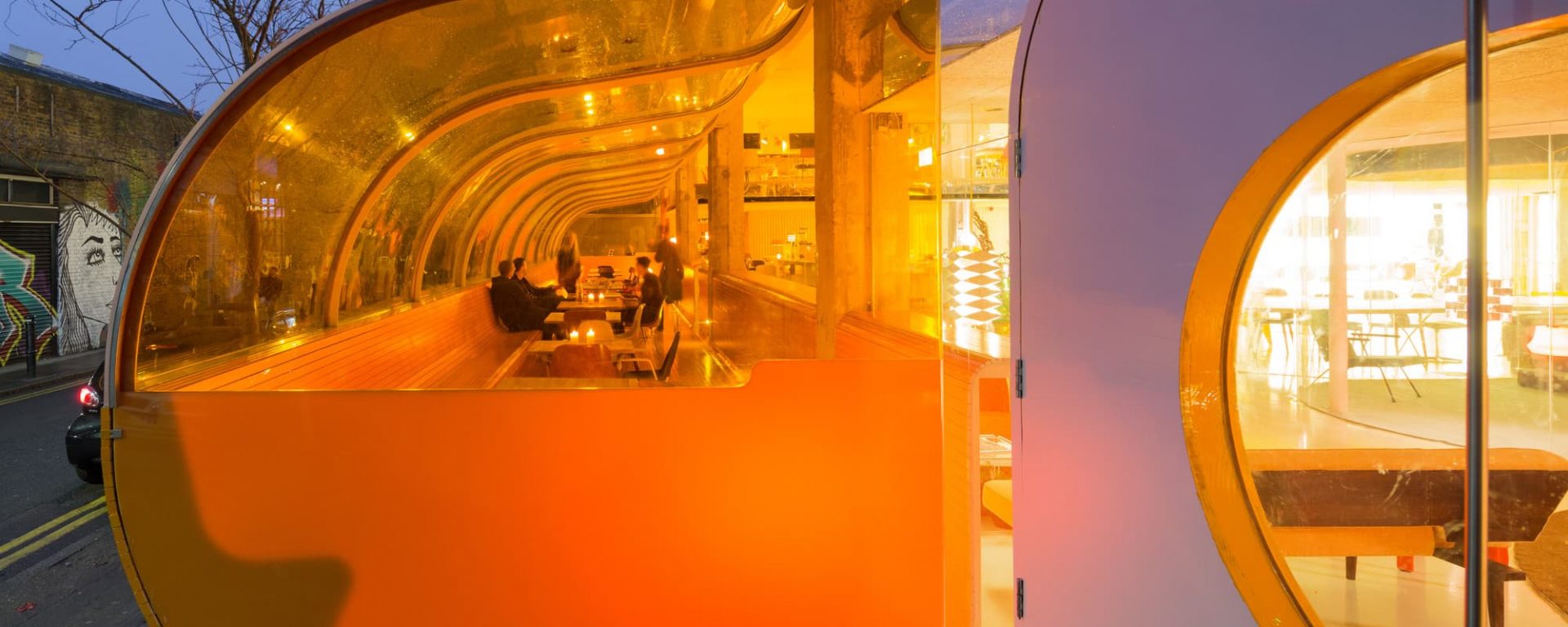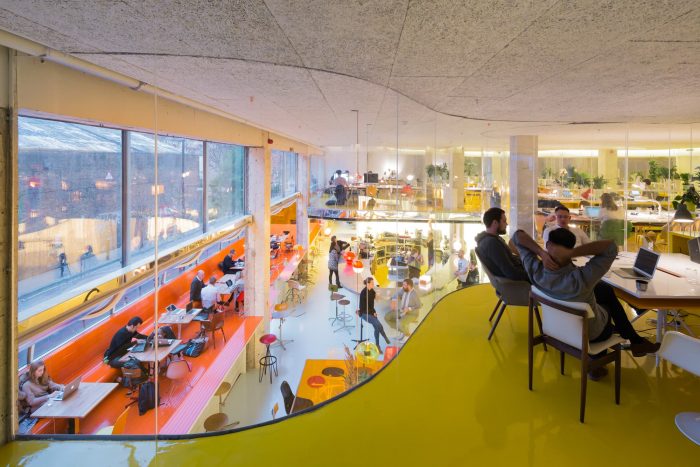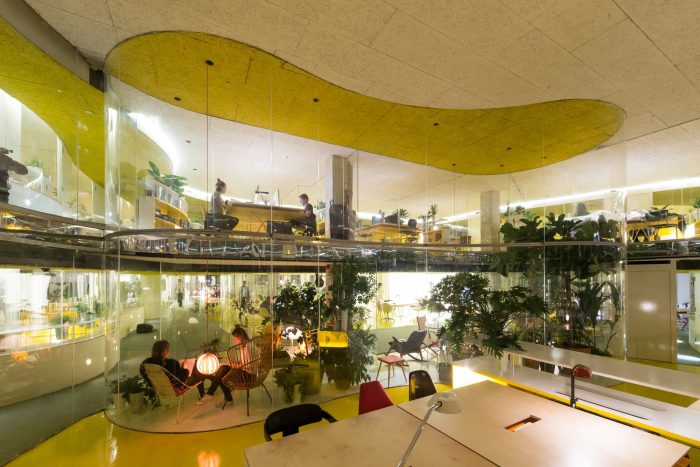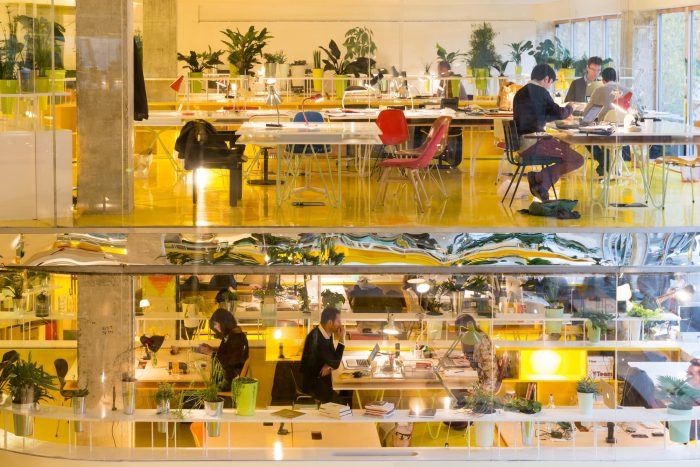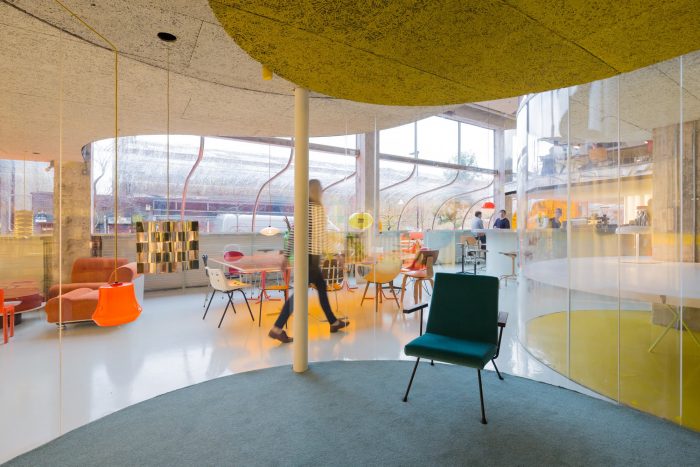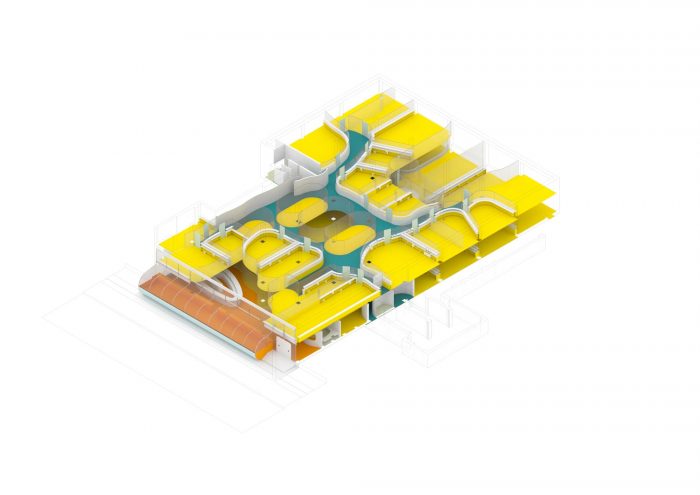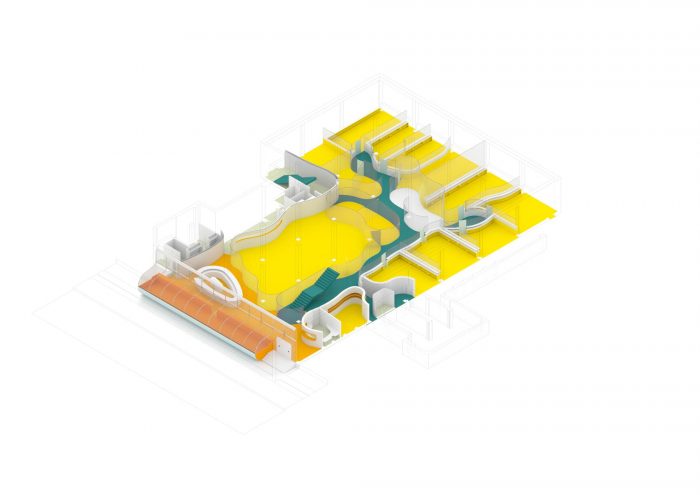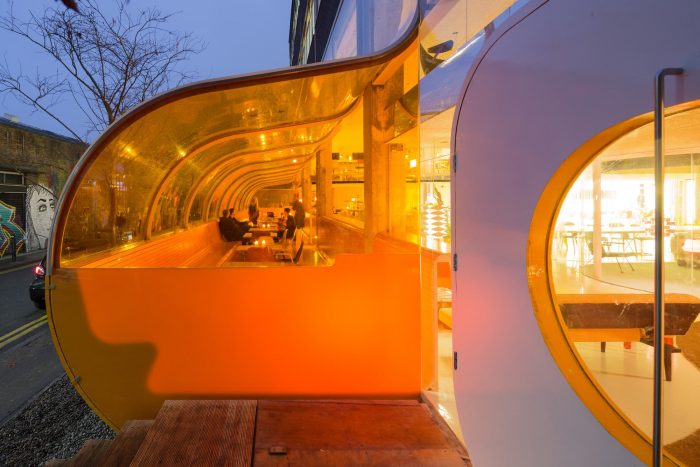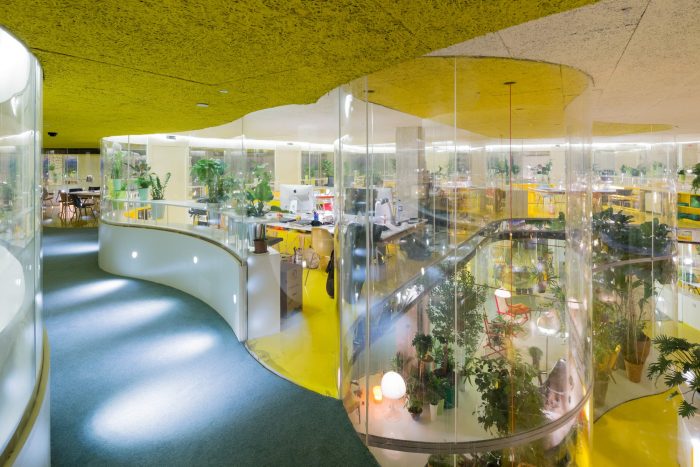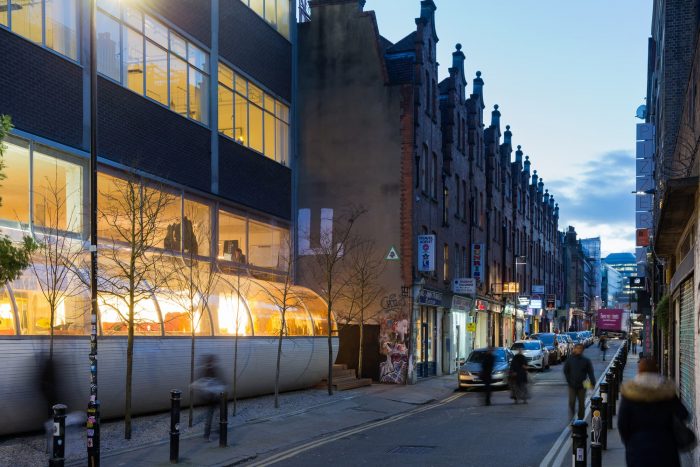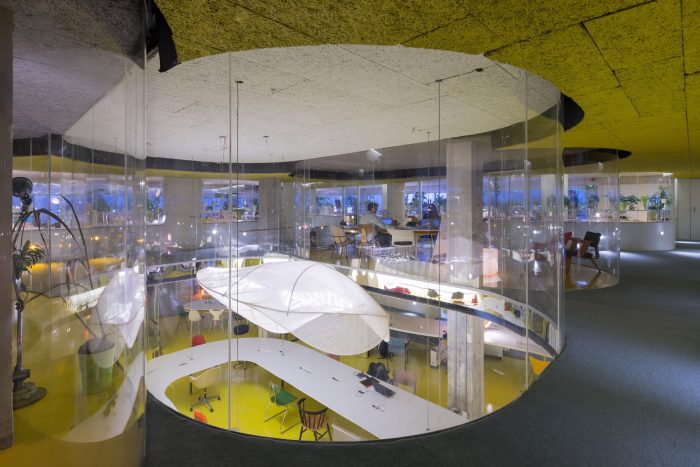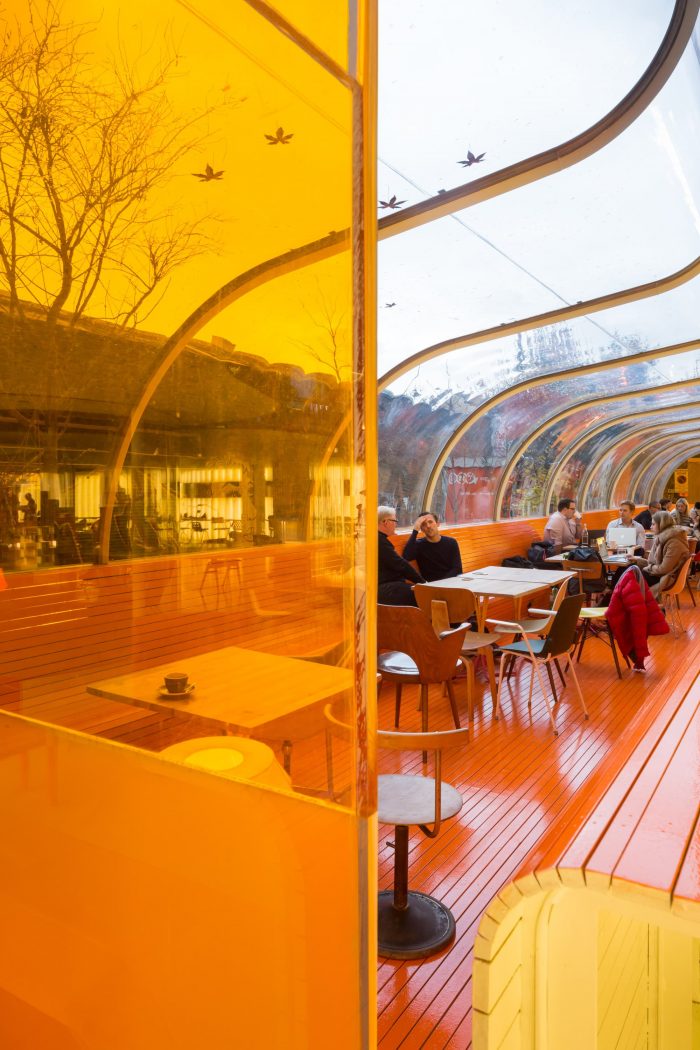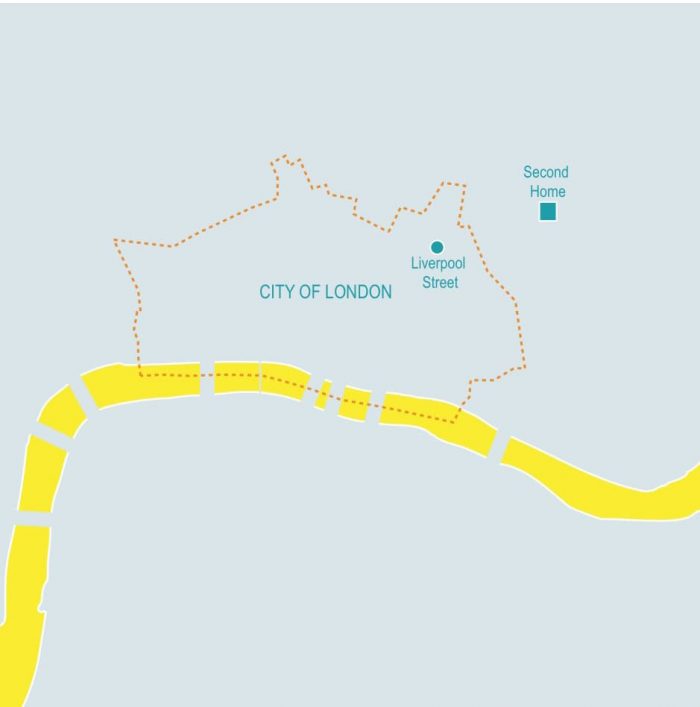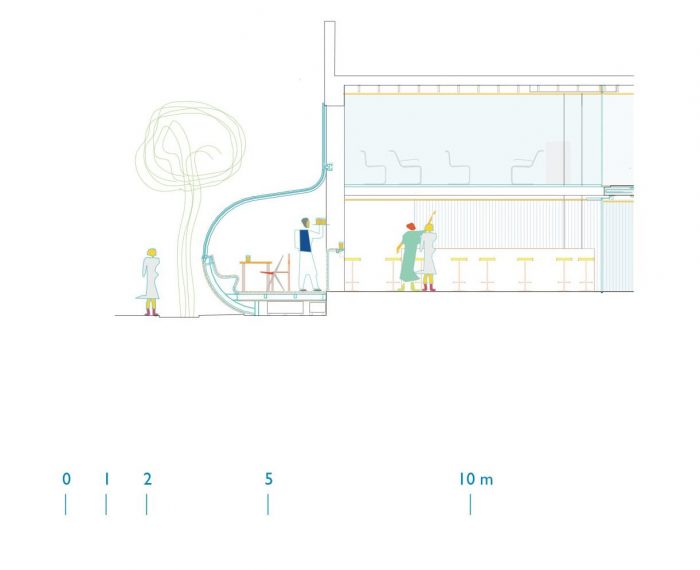secondhomese位于伦敦市东区的Spitalfields附近,毗邻另类的Brick Lane市场。这是一个共享工作空间(联合办公空间)的概念,容纳了大约30家公司,这些公司和附近的公司一样另类,规模小,而且与技术相当相关。租用不同工作室的可能性是多方面的,而且在时间上非常有弹性,这些工作室从一个大的公共区域的一个地方,最多可容纳75人,到5、7、10人的工作室,直到最大的工作室,最多可容纳20人。
secondhomese is located near Spitalfields in the East End of the city of London, next to the yet alternative Brick Lane market. It is a concept of shared workspace (co-working space) that hosts some 30 companies that are as alternative as the neighborhood, small scale, and quite related to technology. The possibility of renting the different studios is multiple and very elastic in time, and these vary from a single place in a large common area with room for up to 75 people, through studios for 5, 7, 10 people, up to the largest studio which can accommodate 20 people maximum.
但在这个项目中,更重要的是任何成员都可以使用的公共空间。这里有七个会议室,几个休息区,你可以阅读或聊天,一个宽敞的咖啡吧,咖啡是免费的,你可以在中午吃五磅,还有一个工作-活动的混合区,大工作桌升到天花板,为任何活动留下干净的房间,从瑜伽和早上的普拉提到晚上的音乐会,聚会,晚餐,会议,电影……
But more importantly in the program are the common spaces that can be used by any member: There are seven meeting rooms, several rest areas where you can read or chat, a spacious cafe-bar, where coffee is free and you can eat at noon for five pounds, and a mixed area of work-events where the large work table rises to the ceiling to leave the clean room for any activity, ranging from yoga and morning pilates to evening concerts, parties, dinners, conferences, film …
直到我们开始写这篇文字,2014年9月21日,我们在一个紧张和非常快的过程中与这个项目合作,所有的工作都在不到八个月内完成,现在当施工已经开始,强度被强调,因为它必须在11月底前完成,我们走出了一个小的间隔,在飞行的工作,让我们对这个项目,它的动机,需求和可能的现实或美德进行一点思考。我们明白,每个人,包括我们自己,首先会问的一个问题是,为什么会有如此夸张的曲线使用,为什么一个简单的空间,原始支柱的正交布局,最终成为一个复杂的空间密集,同时也是平滑和连续的?
Until we started writing this text, September 21, 2014, we have worked with this project in an intense and very fast process, all done in less than eight months, and now when the construction has already begun and the intensity is emphasized, because it must be completed by the end of November, we got out a small interval on a flight to a work that flies, allowing us to reflect a little on the project, its motives, needs and possible realities or virtues. We understand that one of the first questions that everyone will ask, ourselves included, is why is there such an exaggerated use of the curve, why a simple space with an orthogonal layout of original pillars, eventually becomes a complex space dense and at the same time smooth and continuous?
第一个问题的答案实际上是如此平庸,因为所有的现实通常都是如此。这纯粹是一个经济问题。第二个家的概念涉及到不可避免的需要,最后相当实现,用小的工作空间占据每一个角落和每一个沐浴在日光下的区域,当然,也需要进入这些不同的区域传播两端;需要没有任何浪费,没有一个角落是不用来做什么的,没有一个角度有人不能坐下来,工作,谈话或放松。这种对经济的处理,在其最广泛和原始的意义上,达到最大限度,总是让我们对成就感到非常满意;但另一方面,这种高密度意味着充分占有和使用空间的极限,它成为我们最大的未知数之一,即未来如何真正运作,这么多人在高度集中的区域一起工作。
The answer to the first question is, in fact, so banal as all realities usually are: It is purely an economic issue. The concept of secondhome involved the unavoidable need, quite achieved finally, of occupying with small work spaces every corner and every area bathed in daylight, and, of course, the need to access each of these different areas spread the ends; the need for there to be nothing wasted, there is no corner that is not used for something, there is no angle where someone can’t sit, work, talk or relax. This handling of the economy, in its broadest and original meaning, up to its maximum limit, is something that always leaves us very satisfied with the accomplishment; but on the other hand, this high density implies full occupancy and use of space to the limit, it becomes one of our greatest unknowns about how it will really work in the future, with so many people working together in highly concentrated areas.
因此,我们试图限制这种可能导致复杂的迷宫的潜在混乱,有两个技巧。首先是用永久性的视觉和物理上的整体流动性,使你不会感到迷失或被锁定在任何地方;其次是对声音的充分控制,不仅有吸音地毯和天花板,还有将声音传播到各个方向的连续曲线。而且还用这种连续性作为密度的解毒剂,我们实现了侧面反应,增加了整个空间的力量,使其成为一个整体,独特而统一,显得更大和无尽。而这正是我们这些天的问题。最后真的会是这样吗?它真的会成为一个空间,在简化的同时跑出透明和反射,使其变得如此复杂,从而打开空间,使其同时变得无限和舒适?更重要的是,我们最终会不会得到一个空间,建筑被溶解在一个家常的空气中,做到这一点……这正是Sam和Rohan一开始就委托我们做的。作为家的办公室?…… 或者说是把房子当做办公室?
Therefore, we try to limit this potential chaos that could result in a maze of complexity, with two tricks: First with a permanent visual and physical fluidity of the whole, which prevents you from feeling lost or locked in anywhere; and second with full control of the sound, not only with absorbent carpets and ceilings, but also the continuous curve that spreads the sound in all directions. And also to use this continuity as an antidote to the density, we achieve side reactions that increase the strength of the entire space, making it a whole, unique and united, appearing larger and endless. And that is exactly our question these days: Will it really be like this in the end? Will it really be a space in which the transparency and reflections run out while simplify and make it so complex that they open the space and make it infinite and cozy at the same time? And more importantly, will we end getting a space where architecture is dissolved in a homespun air, to do just that … which is exactly what Sam and Rohan commissioned us at the start: An office as a home? …… Or was it a house as an office?
“在五到十年内,我们都会在家里工作。但那时我们将需要更大的房子,大到可以用来开会。办公室将不得不被改造成家庭 “雷姆-库哈斯,《通用城市》1994年
“in five to ten years we will all work at home. But then we will need bigger homes, big enough to use for meetings. Offices will have to be converted to homes” Rem Koolhas, The Generic City 1994
Architects: Selgascano
Year : 2014
Photographs :Iwan Baan
Collaborators : Paolo Tringali, Víctor Jiménez, Bárbara Bardín, María Levene, Inés Olavarrieta
Cost Architect : Jackson Coles
Construction Administration : OD Group
Structures : Tibbalds
Furniture Design : Selgascano / Secondhand design furniture
Partners : José Selgas, Lucia Cano
City : London
Country : United Kingdom

